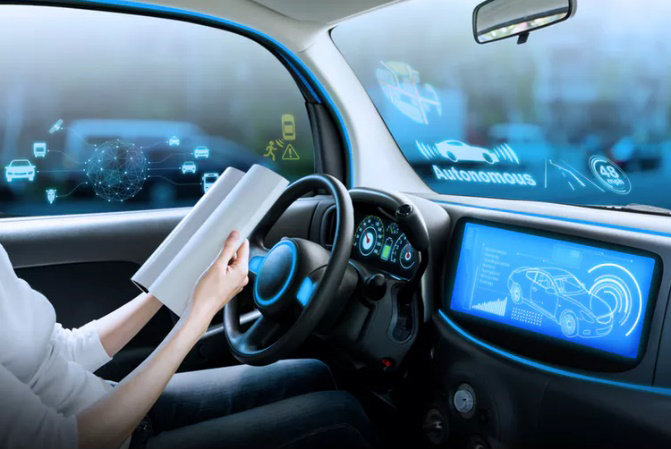Can roads be smart?
Although it might seem like a trick question, many roads are smart today. They have been designed and built to adapt to differing climate conditions or heavy traffic. Even operations and maintenance are becoming increasingly more refined, and for some time now have featured electromagnetic technology to count the number of vehicles, or advanced analytics models to predict traffic or maintenance on critical assets.

The next two or three years will undoubtedly bring qualitative changes for road transport, and the influx of the fourth industrial revolution will definitively reach smart roads. At Globalvia, we are aware of rapid change and these new scenarios. What technologies are just around the corner? We will discover what we need to be ready for:
The car whisperer
What happens if you have an accident and you can’t call for help? This situation could be reversed by fitting advanced sensors to road surfaces warning the emergency services in real time.
There are multiple advantages in fitting sensors to road surfaces, including the possibility of providing detailed information about traffic patterns, allowing managers to plan better and provide information to users about the route in real time. There are many projects already underway, for example RoadX in Colorado, USA, or in the United Kingdom and Israel with the initiatives such as start-up.
Plan B for autonomous vehicles
Autonomous vehicles can drive alone 99% of the time thanks to pre-established decisions and artificial intelligence algorithms. There are 6 levels of autonomy and tests are being conducted on levels 4 and 5 at present. Nevertheless, reaching 100% autonomy is likely to take quite some time. For autonomous cars to become a reality on our roads in the next two years, technology is being developed to overcome regulatory and legislative obstacles.

An autonomous vehicle can connect to a support service managed by people in real time to help it resolve unpredictable or unsafe emergency situations. A human operator and AI systems (Artificial Intelligence) in the car will work together during remote intervention. In this sense, the human being will help the autonomous vehicle to make decisions in cases of complex scenarios, and the vehicle will implement the decision supported by a set of sensors and advanced actuators.
Data, data and yet more data
So what happens with all the data from roads and connected vehicles? Some companies are very clear about this and are creating different data and services marketplaces for driving of the future or to produce new mobility models.
Data interconnection between cars and cities and infrastructures will have a positive impact for citizens. Users will be able to access information in real time about their route, acquire their favourite “on the go” services and enjoy safer, more relaxed driving.
Smart parking
According to Bosch, 30% of the traffic in city centres is due to cars looking for somewhere to park. Technological solutions to simplify the search for available parking places and even implementing automated parking with undergo exceptional growth. The application of artificial vision is growing in order to monitor the use and occupation of parking places, both in car parks and in the street, and will provide drivers with information in real time about where there are available parking places.
Smart traffic signs, traffic lights and lighting on roads
In Oslo (Norway) a 15 km long section of road has been fitted out with a system that reduces energy and economic costs without compromising drivers’ safety. Just in the fist week, the system managed to save 2,300 kW/hour. Through the use of this technology, street lamps on the road work at 20% of their maximum capacity when there is low traffic density. The implemented system based on IoT (Internet of Things) is capable of detecting movement of cars and pedestrians, increasing the lighting to maximum power on lamps immediately in front of the vehicle to light its way on the road ahead. When the vehicle has passed, the lamps return to their energy saving mode.
Video: Daan Roosegaarde’s pilot Smart Highway is a Dutch road illuminated with solar power.
Smart supercharging of electric cars
While current trends involve deploying charging points all over the place, scientists are experimenting with new ways of charging vehicles on the road. Some European initiatives, underway since 2014, are looking at the possibility of electric cars charging as they are driving on a section of road capable of transferring electricity to the vehicle, or recovering energy from friction caused by movement of the vehicle itself. In the next two years we will begin to see massive deployment of these facilities, which are already a reality in China and the USA (Smart Powered Lanes).
And what if the road was the sky?
While the logistics industry is highly expectant about the arrival of autonomous drones and cars for last mile distribution, flying taxis are no longer science fiction. 2019 will be the year when companies move on from pilot tests to controlled testing in cities. Uber, Volocopter, Airbus, among others are already working to define new sir highways in the sky connecting different points of cities.
Disruptive technology is changing the way we get about. Are we ready for it?
